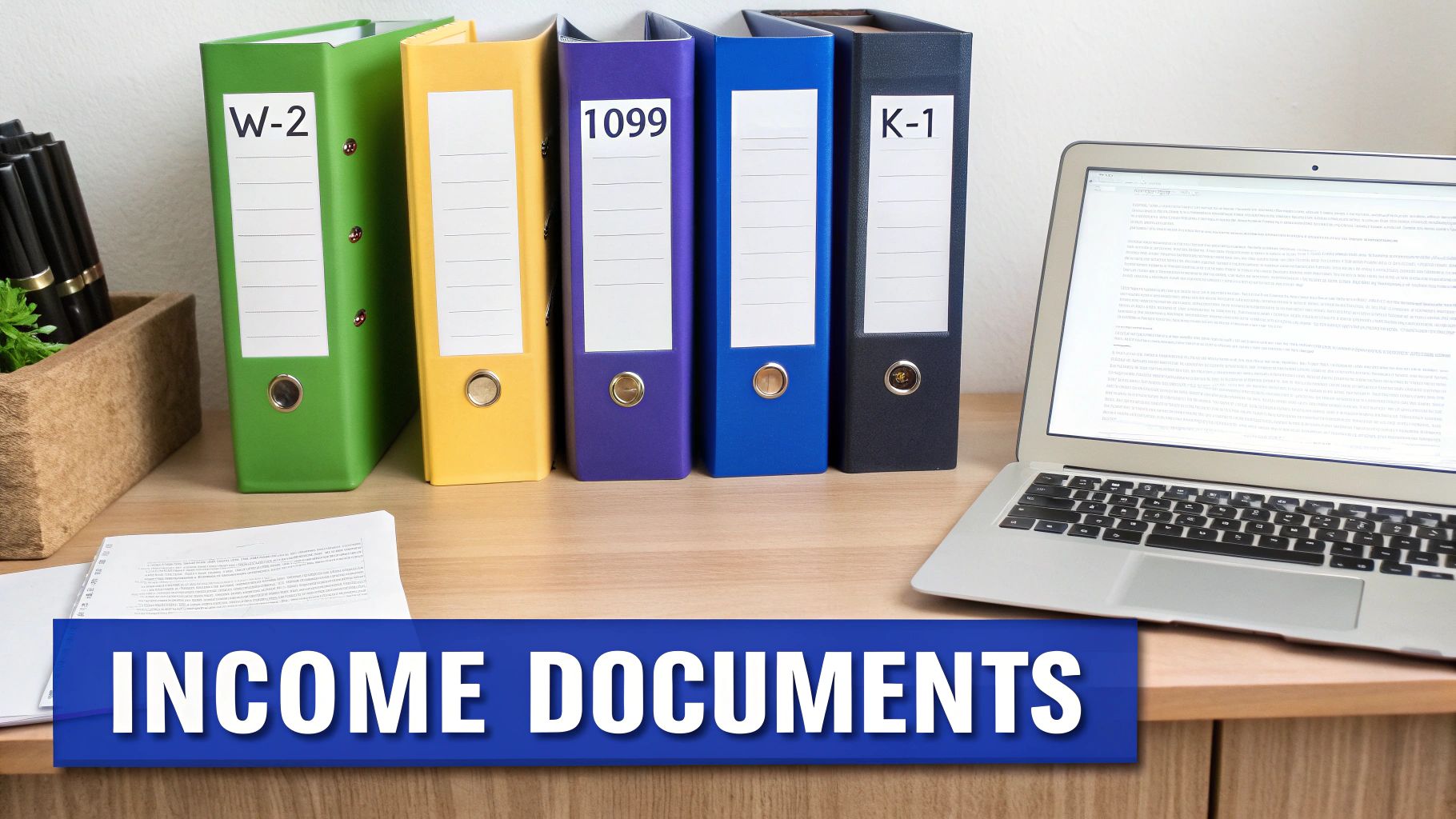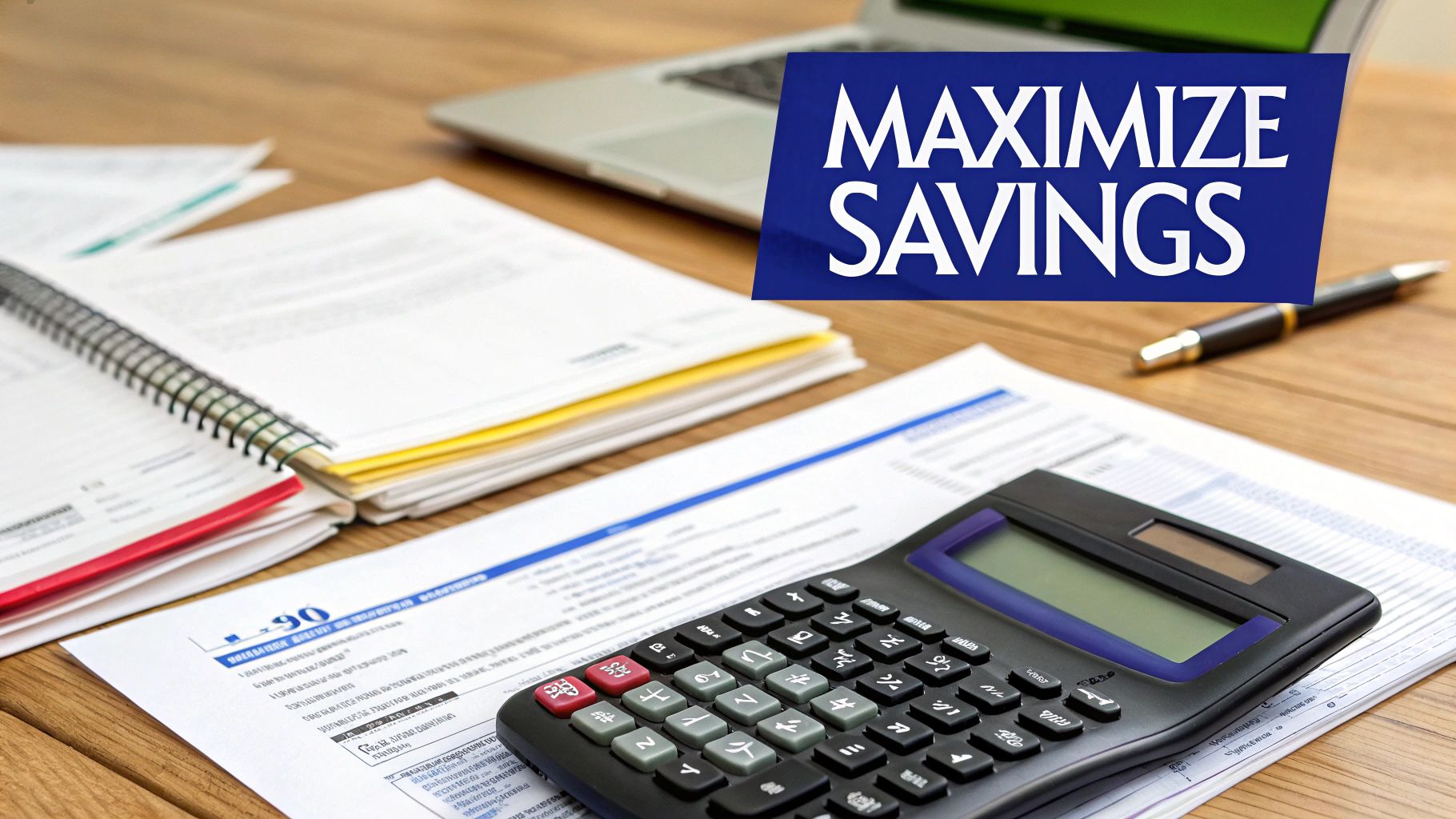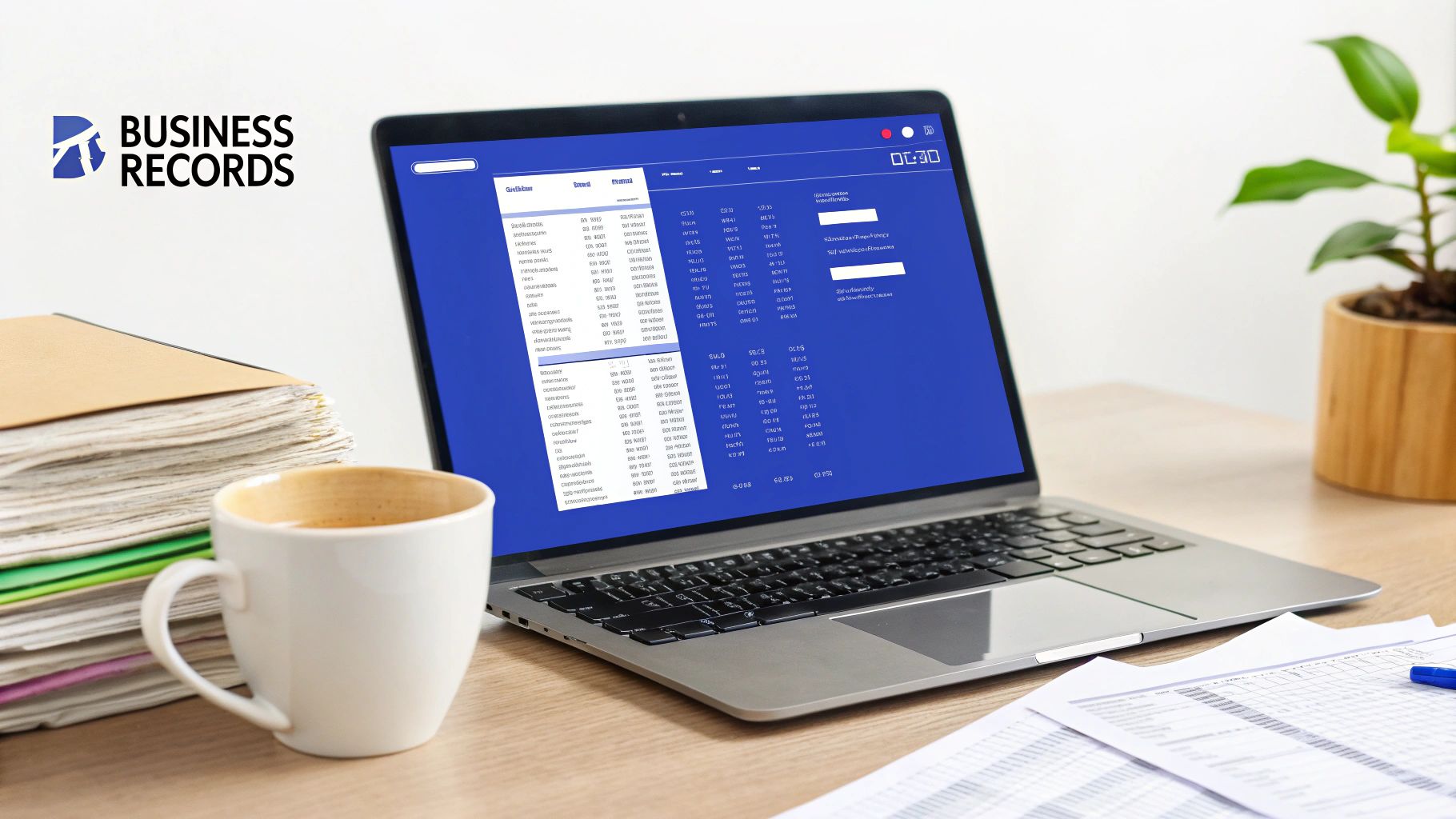
Preparing your tax return can feel overwhelming. This comprehensive tax return checklist simplifies the process for Australian individuals and businesses, covering everything you need for a smooth 2025 lodgement. From personal identification and income documentation to maximizing deductions and understanding specific business requirements, this guide ensures you’re well-prepared for tax time. Using this checklist will not only save you valuable time but also help minimize errors and potentially maximize your refund. This detailed guide will walk you through gathering the right documents for your individual tax return checklist or, if applicable, your small business tax return checklist. We’ll cover key areas like income verification, deductions, record-keeping, and specific requirements for various situations, addressing questions like, “What documents do I need for my tax return?” and highlighting what to prepare for your tax agent. This way, you can confidently approach tax season, knowing you have everything in order for a hassle-free experience.
This tax return checklist Australia covers:
By following this checklist, you can approach your tax return with confidence and ensure a streamlined process, maximizing your deductions and reducing the chance of errors. This tax time checklist helps prepare you for meeting with your tax agent, or for confidently lodging your tax return yourself through myGov.
A meticulous approach to gathering and verifying your income documentation is the cornerstone of accurate tax preparation. This crucial first step on your tax return checklist ensures you’re declaring all income and minimizing the risk of discrepancies with Australian Taxation Office (ATO) records. Failing to declare all income can lead to penalties, so thorough organization from the start is key. This applies whether you’re an employee, a sole trader, an investor, or involved in cryptocurrency transactions. This organized approach is essential for a smooth tax lodgement experience.

For individuals, this involves compiling various documents depending on your income sources. These typically include your PAYG payment summaries from employers, Centrelink income statements if applicable, and details of any investment income like dividends and interest. Remember to include records of crypto transactions as these are also considered income by the ATO. A comprehensive tax return checklist Australia should always highlight this.
Organizing your income documents isn’t just about ticking off a box on a tax return checklist. It’s about taking control of your financial information, ensuring accuracy, and setting yourself up for a stress-free tax season. Having a complete picture of your income allows you to accurately assess your tax obligations and potentially identify opportunities to maximize deductions and minimize your tax liability.
Identifying and claiming all eligible deductions and tax credits is crucial for minimizing your tax liability. This step in your tax return checklist involves understanding the difference between standard and itemized deductions and researching available credits. Proper documentation for all claims is essential to substantiate your deductions and avoid issues with the ATO. This diligent approach can significantly reduce your tax burden and potentially lead to a larger refund. A comprehensive tax return checklist Australia should always emphasize this crucial step.

For Australian taxpayers, understanding what documents do I need for my tax return includes records supporting various deductions. These can range from work-related expenses like travel and training to charitable donations and investment property expenses. Being aware of available tax credits, such as offsets for low-income earners or those with dependents, can further reduce your tax. This is a key element of any individual tax return checklist.
Maximizing deductions and credits isn’t just about reducing your tax liability; it’s about ensuring you’re claiming everything you’re entitled to. This crucial element of your tax return checklist can significantly impact your refund or amount owed. Taking the time to understand available deductions and credits can lead to substantial savings and a more efficient tax process. This organized approach is vital for any tax agent checklist to ensure a smooth and accurate lodgement.
Meticulously gathering and organizing your business and self-employment records is paramount for accurate tax preparation, especially if you’re a sole trader, freelancer, or small business owner in Australia. This crucial step in your tax return checklist ensures you’re accurately reporting income and maximizing allowable deductions. A comprehensive record-keeping system minimizes the risk of errors and simplifies the process of fulfilling what documents do I need for my tax return obligations. This proactive approach is essential for a smooth tax lodgement experience, regardless of your business structure.

For self-employed individuals and business owners, this involves compiling a comprehensive record of all income and expenses. This includes invoices, receipts, bank statements, and any other documentation that supports your business transactions. Accurately documenting these details is crucial for determining your net income and maximizing potential deductions on your tax return checklist Australia.
Organizing your business and self-employment records is more than just a task on a tax return checklist; it’s a fundamental aspect of responsible financial management. Having a clear picture of your business finances not only simplifies tax preparation but also enables you to make informed decisions about your business’s growth and profitability.
Accurate personal information is the foundation of a correctly filed tax return. This crucial step on your tax return checklist ensures the ATO processes your return efficiently and minimizes potential issues. Errors in basic information like your Social Security number, filing status, or dependent details can lead to processing delays, trigger ATO notices, or even result in a rejected e-filed return. Verifying these details before lodging is a vital part of a comprehensive tax return checklist Australia.
For many Australians, this involves double-checking seemingly simple details that can have a significant impact. This is especially true for those experiencing life changes. For example, divorced parents must confirm which parent claims any children as dependents to avoid discrepancies. Newlyweds deciding whether to file jointly or separately need to understand how this choice affects their tax liability. Families with college-age students must verify dependent status based on current regulations. Accurate personal information is crucial for your individual tax return checklist.
Verifying your personal information isn’t just about ticking a box on a tax return checklist. It’s about ensuring the ATO has the correct information to process your return accurately and efficiently. Taking the time to verify these details minimizes the risk of delays or errors, paving the way for a smoother tax lodgement experience and contributing to a stress-free tax time. This meticulous approach benefits both individual and tax agent checklists. Having accurate personal details ensures you receive the correct refund or accurately assess your tax obligations.
A well-defined filing plan, encompassing method and deadline adherence, is crucial for successful tax lodgement. This step on your tax return checklist involves choosing between e-filing and paper filing, selecting appropriate software or professional assistance, and ensuring compliance with Australian Taxation Office (ATO) deadlines. A proactive approach to these aspects can significantly simplify the process and mitigate potential issues. Understanding extension options and estimated tax payment requirements are also key components of a comprehensive tax return checklist Australia.
For individuals, choosing the right filing method often depends on the complexity of their tax situation. Simple returns can often be lodged quickly and easily using free or low-cost tax software. More complex returns, especially for business owners or investors, might benefit from the expertise of a registered tax agent. Knowing what documents do I need for my tax return will help determine the best approach. This is particularly important for your individual tax return checklist.
Planning your filing method and adhering to deadlines is more than just a tick on a tax return checklist; it’s about ensuring accurate and timely lodgement, avoiding penalties, and gaining peace of mind. By taking a proactive approach, you can navigate tax season efficiently and focus on your financial well-being.
| Item | Implementation Complexity | Resource Requirements | Expected Outcomes | Ideal Use Cases | Key Advantages |
|---|---|---|---|---|---|
| Organize and Verify Income Documents | Moderate: managing multiple document types | High: ongoing organization & verification | Accurate income reporting; audit readiness | Freelancers, employees with diverse income sources | Prevents underreporting; streamlines filing |
| Maximize Deductions and Credits | High: complex rules and annual changes | High: extensive record-keeping | Reduced tax liability; larger refunds | Families, homeowners, students | Significant tax savings; incentivizes behaviors |
| Gather Business and Self-Employment Records | High: detailed expense tracking & depreciation | High: accounting software and logs | Maximized deductions; reduced self-employment tax | Self-employed individuals, small business owners | Organized finances; supports business decisions |
| Review Previous Year’s Return and Address Carryovers | Moderate: requires understanding prior returns | Moderate: access to past returns | Continued tax benefits; accurate carryovers | Investors, repeat filers tracking carryovers | Prevents loss of benefits; error identification |
| Compile Investment and Retirement Account Information | High: complex cost basis & multiple forms | High: investment software or spreadsheets | Accurate gains/losses; retirement planning | Retirees, active traders, professionals maximizing contributions | Maximizes retirement benefits; tax-loss harvesting |
| Verify Personal Information and Dependent Details | Low: detail-oriented verification | Low: document checks | Avoids filing errors; smooth processing | All taxpayers ensuring correct personal data | Prevents delays and rejections; optimizes status |
| Prepare Healthcare and Insurance Documentation | Moderate: ACA rules and detailed medical records | Moderate: medical documents and tracking | Maximized health-related tax benefits | Families, self-employed, those with high medical costs | Ensures ACA compliance; optimizes HSA benefits |
| Plan Filing Method and Deadline Compliance | Moderate: decision-making and deadline tracking | Moderate: software/professional cost/time | Timely filing; penalty avoidance | All taxpayers; complex situations requiring extensions | Faster refunds; reduces filing stress |
Preparing your tax return can feel like navigating a complex maze, but with a comprehensive tax return checklist, you can streamline the process and ensure accuracy. This individual tax return checklist, encompassing everything from personal identification and income documentation to deductions and offsets, equips you with the tools for a smooth lodgement. Remember, a well-prepared tax return is not just about compliance; it’s about maximizing your financial benefits.
Before submitting, revisit your tax return checklist one last time. Verify that all necessary documents, like your PAYG payment summaries and any records supporting your deductions (what documents do I need for my tax return?), are included. Cross-referencing your assembled documents with the checklist minimizes the risk of errors and omissions, ultimately contributing to a faster processing time and refund. This process is crucial whether you are an individual taxpayer, a small business owner, or managing a self-managed super fund (SMSF).
You have several options for lodging your tax return in Australia. You can lodge it yourself through myGov, or engage a registered tax agent. Using a tax agent checklist can further streamline this process. For those seeking expert guidance and support, consider partnering with a qualified tax professional. A tax agent can provide personalized advice, identify potential deductions you might have overlooked, and ensure your return is compliant with Australian tax laws.
A thorough tax return checklist is essential for maximizing your refund. Don’t miss out on claiming eligible deductions, such as work-related expenses, charitable donations, or investment-related costs. Accurate record-keeping is crucial. Ensure you have appropriate documentation, such as receipts and invoices (tax time documents), to substantiate your claims. Remember, even small deductions can add up to a significant difference in your final refund.
Completing your tax return is not the end of your financial journey. Use this experience to improve your tax planning for the next financial year. Review your income, expenses, and deductions to identify areas for improvement. Consider strategies to minimize your tax liability and maximize your savings. This proactive approach will make future tax time significantly less stressful and potentially more rewarding. This is especially important for businesses preparing their small business tax return checklist.
Your tax return is a crucial financial document. By using a comprehensive tax return checklist Australia and taking the time to prepare thoroughly, you ensure accuracy, maximize potential benefits, and contribute to a smoother, less stressful tax season. Taking these final steps now will save you time and potential headaches down the road.
Ready to simplify your tax lodgement and ensure you’re claiming everything you’re entitled to? Nanak Accountants and Associates can assist with every item on your tax return checklist, ensuring a smooth and stress-free process. Visit Nanak Accountants and Associates to learn more about our comprehensive tax services tailored to your individual needs.
The information on this website is for general informational purposes only and should not be considered financial, taxation, or legal advice. While we strive for accuracy, Nanak Accountants does not guarantee the completeness or reliability of the content. Laws and regulations change over time, and we recommend consulting a qualified professional before making any financial or business decisions. Nanak Accountants is not liable for any loss or consequences arising from reliance on this information. For personalised advice, please contact Nanak Accountants directly.
Nanak Accountants
Typically replies within minutes
Any questions related to Taxation?
WhatsApp Us
🟢 Online | Privacy policy
WhatsApp us



